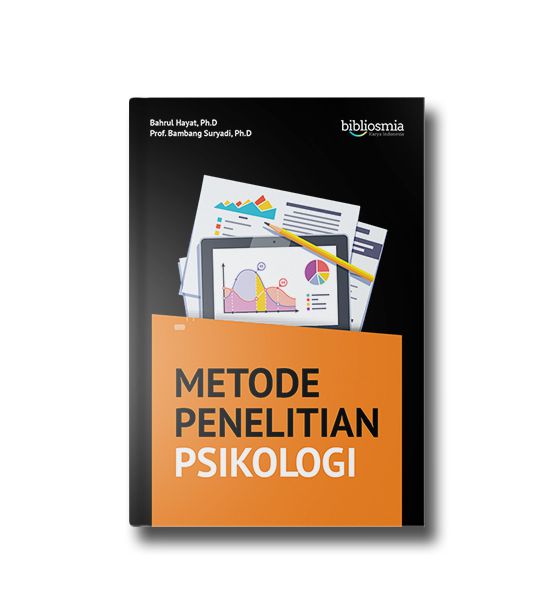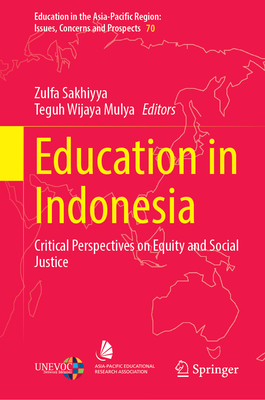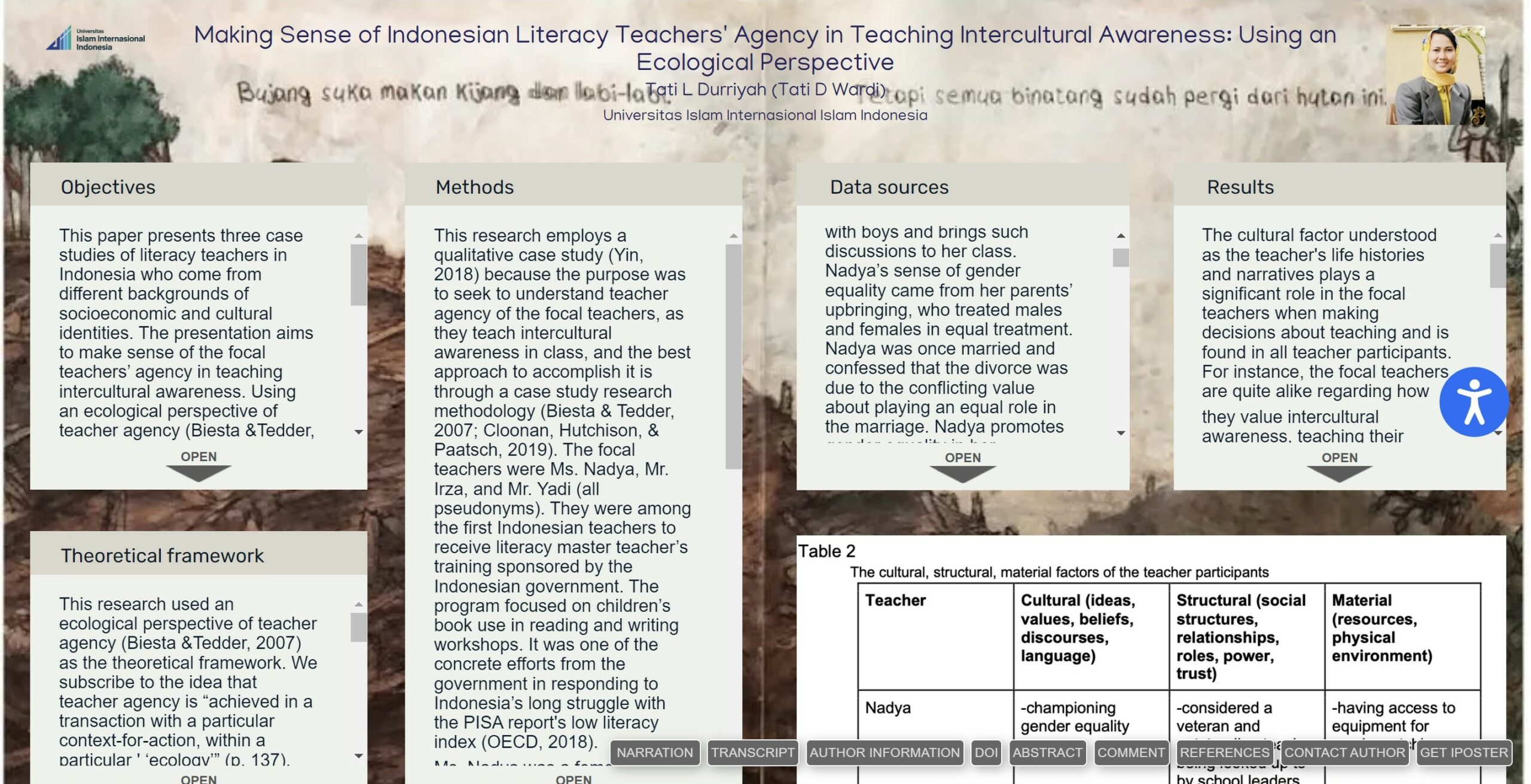Beyond the classroom walls: exploring parental involvement on children’s interest development in EFL learning (A case from Indonesia)
 Wahyuni, N. T., & Bee Tin, T. (2024). Beyond the classroom walls: exploring parental involvement on children’s interest development in EFL learning (A case from Indonesia). Education 3-13, 1–15. https://doi.org/10.1080/03004279.2024.2340548
Wahyuni, N. T., & Bee Tin, T. (2024). Beyond the classroom walls: exploring parental involvement on children’s interest development in EFL learning (A case from Indonesia). Education 3-13, 1–15. https://doi.org/10.1080/03004279.2024.2340548
ABSTRACT
This study reports the findings of a case study that followed a group of Indonesian primary school EFL learners (10–11 years old). They were observed in school and at home and interviewed with their parents. The study highlights various ways children can develop an interest in learning English and how parents help shape their children’s interests. Four students who demonstrated different patterns of interest development were selected for detailed analysis. Through these cases, the study attempts to understand the role of parents in developing interest in EFL learning. All four child participants were provided with a similar supportive learning environment at school, suggesting that their differences may have primarily been attributed to their different home learning environments, parental involvement, and parenting styles.
Understanding the Complexities of Child Marriage and Promoting Education to Prevent Child Marriage in Indramayu, West Java
 Nurmila, N., & Windiana, W. (2023). Understanding the Complexities of Child Marriage and Promoting Education to Prevent Child Marriage in Indramayu, West Java. Ulumuna, 27(2), 823-853. https://doi.org/10.20414/ujis.v27i2.680
Nurmila, N., & Windiana, W. (2023). Understanding the Complexities of Child Marriage and Promoting Education to Prevent Child Marriage in Indramayu, West Java. Ulumuna, 27(2), 823-853. https://doi.org/10.20414/ujis.v27i2.680
Abstract
The problem of child marriage in Indonesia is complex. There are many factors affecting the incidence of child marriage, such as poverty, lack of education, religious belief, social pressure, and limited employment opportunities. This paper aims to understand the complexities of child marriage in Indramayu, West Java. The Indonesian government has tried to eliminate child marriage, such as by amending the Law on the minimum age of marriage from 16 to 19 years old for girls. This paper argues that due to the complex problems of child marriage, eliminating child marriage requires many efforts to address the causes of child marriage, not only by amending the Law. This research is feminist research, which combines knowledge production with activism. It does not merely produce "knowledge what" but also "knowledge for" by encouraging girls to continue their studies to prevent child marriage. The finding shows that most women regretted marrying underage because they were financially unprepared. This implies that child marriage can result in economic insecurity, leading to a cycle of poverty in society.
Indonesian literacy teachers’ efforts to integrate children’s literature in literacy classrooms.
 Durriyah, T.L., Parlindungan, F., Dewayani, S. et al. Indonesian literacy teachers’ efforts to integrate children’s literature in literacy classrooms. The Australian Journal of Language and Literacy AJLL (2023). https://doi.org/10.1007/s44020-023-00056-0
Durriyah, T.L., Parlindungan, F., Dewayani, S. et al. Indonesian literacy teachers’ efforts to integrate children’s literature in literacy classrooms. The Australian Journal of Language and Literacy AJLL (2023). https://doi.org/10.1007/s44020-023-00056-0
Abstract
Literacy is now an essential part of teaching for Indonesian teachers. This qualitative case study reports on three Indonesian teachers as they integrate the use of children’s literature into their literacy instruction. For 4 months, the teachers’ efforts to use children’s literature were documented through multiple sources such as focus group discussions and interviews, teachers’ reflections, and classroom observational notes. The study uses the reader-response theory framework, especially the notion of teachers as part of the learning context in promoting students’ engagement with a text. The study highlighted some case study teachers’ classroom practices centering on children’s literature, giving access to books, infusing children’s literature in teaching, and using books to discuss difficult topics with students. The findings discussion sheds light on some contributing factors to the teachers’ decision to integrate children’s literature into their classrooms and how they could make such decisions. The discussion points to a larger picture of how these teachers were empowered to make decisions to integrate children’s literature, particularly with diverse themes.
Profile of teacher leaders in an Indonesian school context: How the teachers perceive themselves

Hariri, H., Mukhlis, H., & Sumintono, B. (2023). Profile of teacher leaders in an Indonesian school context: How the teachers perceive themselves. Asia Pacific Journal of Educators and Education, 38(2), 67–87. https://doi.org/10.21315/apjee2023.38.2.5
Mobilitas Penduduk dan Kualitas Udara saat Pandemi COVID-19: Studi kasus DKI Jakarta. Jurnal Wilayah dan Lingkungan
Alamsyah, P., & Hakim, L. N. (2023). Mobilitas Penduduk dan Kualitas Udara saat Pandemi COVID-19: Studi kasus DKI Jakarta. Jurnal Wilayah dan Lingkungan, 11(2), 126-140. https://ejournal2.undip.ac.id/index.php/jwl/article/view/17841
 Abstract
Abstract
Penelitian ini bertujuan melihat sejauh mana mobilitas penduduk berpengaruh terhadap lingkungan, khususnya kualitas udara. Para peneliti sebelumnya telah mempelajari dampak mobilitas penduduk dan kaitannya dengan ekonomi, pola penyebaran penyakit, dan psikologis. Namun demikian masih sedikit yang meneliti bagaimana faktor lingkungan mempengaruhi dan dipengaruhi oleh mobilitas manusia. Bencana covid-19 secara kebetulan memberikan peluang bagi peneliti untuk mempelajari dengan kondisi yang sulit terulang, yaitu kondisi Kota Jakarta yang lebih lengang, dikarenakan mobilitas penduduk di Jakarta yang menurun drastis dikarenakan lockdown. Peneliti berusaha mempelajari fenomena tersebut menggunakan kerangka teori Driver–Pressure–State–Impact–Response (DPSIR). Metode penelitian yang dilakukan adalah kualitatif dengan mengkaji data mobilitas dari Google Mobility Index dan Rom tom Traffic index. Sementara sumber data respon publik diambil dari data cuitan di twitter yang diambil dari Twitter Archiving Google Sheet (TAGS) versi 6.1.7 mulai dari tanggal 15 Februari hingga 22 Mei 2020. Hasil penelitian menunjukkan bahwa penurunan mobilitas penduduk dalam berkendara ternyata tidak secara otomatis akan menurunkan kadar polutan di udara. Terdapat faktor lain yang berkontribusi terhadap polusi di Jakarta, yaitu industri yang berada di Jabodetabek yang mengelilingi Kota Jakarta. Artikel ini bermanfaat bukan saja bagi pemerhati lingkungan, melainkan juga para pengambil kebijakan, bahwa upaya memperbaiki kualitas udara di Kota Jakarta dapat dilakukan dengan mengatur mobilitas penduduk di Kota Jakarta, dan memonitor pihak industri.
Exploring teacher collaboration: what’s inside the Malaysian PLC black box?
 Mohd Zabidi, Z., Abdullah, Z. and Sumintono, B. (2023), “Exploring teacher collaboration: what’s inside the Malaysian PLC black box?”, Journal of Professional Capital and Community. https://doi.org/10.1108/JPCC-03-2023-0020
Mohd Zabidi, Z., Abdullah, Z. and Sumintono, B. (2023), “Exploring teacher collaboration: what’s inside the Malaysian PLC black box?”, Journal of Professional Capital and Community. https://doi.org/10.1108/JPCC-03-2023-0020
Abstract
Purpose
Design/methodology/approach
Findings
Research limitations/implications
Originality/value
Metode Penelitian Psikologi
 Hayat, B. & Suryadi, B., (2023). Metode Penelitian Psikologi. Bibliosmia Karya Indonesia.
Hayat, B. & Suryadi, B., (2023). Metode Penelitian Psikologi. Bibliosmia Karya Indonesia.
Attraction of Authority: The Indonesian Experience of Educational Decentralization
 Sumintono, B., Hariri, H., and Izzati, U.A. (2023). Attraction of Authority: The Indonesian Experience of Educational Decentralization. In: Sakhiyya, Z., Wijaya Mulya, T. (eds) Education in Indonesia, Critical Perspectives on Equity and Social Justice. Springer, Singapore. https://doi.org/10.1007/978-981-99-1878-2_10
Sumintono, B., Hariri, H., and Izzati, U.A. (2023). Attraction of Authority: The Indonesian Experience of Educational Decentralization. In: Sakhiyya, Z., Wijaya Mulya, T. (eds) Education in Indonesia, Critical Perspectives on Equity and Social Justice. Springer, Singapore. https://doi.org/10.1007/978-981-99-1878-2_10
Abstract
The fall of the New Order government in 1998 changed the landscape of Indonesian education from a highly centralized system to a decentralized one. With this paradigm shift, district governments received a transfer of power in most public sectors in 2001, including education. The central questions in this chapter are: (1) How has Indonesia managed education in the decentralization era? and (2) How has the country managed the changes so far? Four key issues are discussed, namely, new regime of standardization, school operational cost, teachers and principals, and National Exam. We argue that Indonesian educational decentralization has mostly been about legitimacy and authority dialectics between local/district and central institutions. Moving from a highly centralized system to a more locally oriented one contests the legitimacy of each actor involved, resulting in competition for resources and survival. Nevertheless, we also identified some advances in terms of social justice and student learning support in this process of decentralization.
Making sense of Indonesian literacy teachers' agency in teaching intercultural awareness: Using an ecological perspective.
 Durriyah, T.L., Dewayani, S., Silvhiany, S., & Parlindungan, F. (2023). Making sense of Indonesian literacy teachers’ agency in teaching intercultural awareness: Using an ecological perspective. American Educational Research Association (AERA) Annual Meeting, Chicago April 2023. https://aera23-aera.ipostersessions.com/Default.aspx?s=67-B7-7F-27-10-13-6F-52-81-07-A7-56-FE-14-75-69
Durriyah, T.L., Dewayani, S., Silvhiany, S., & Parlindungan, F. (2023). Making sense of Indonesian literacy teachers’ agency in teaching intercultural awareness: Using an ecological perspective. American Educational Research Association (AERA) Annual Meeting, Chicago April 2023. https://aera23-aera.ipostersessions.com/Default.aspx?s=67-B7-7F-27-10-13-6F-52-81-07-A7-56-FE-14-75-69
School Leadership and Indonesian Culture: Revealing the local knowledge development in Post New Order Indonesia
 Sumintono, B., Hariri, H. and Kusumaputri, E.S. (2023). School Leadership and Indonesian Culture: Revealing the local knowledge development in Post New Order Indonesia. In Liu, P. and Thien, L.M. (eds). Educational Leadership and Asian Culture, Implications for Culturally Sensitive Leadership Practice. Routledge. https://www.routledge.com/Educational-Leadership-and-Asian-Culture-Implications-for-Culturally-Sensitive/Liu-Thien/p/book/9781032213675
Sumintono, B., Hariri, H. and Kusumaputri, E.S. (2023). School Leadership and Indonesian Culture: Revealing the local knowledge development in Post New Order Indonesia. In Liu, P. and Thien, L.M. (eds). Educational Leadership and Asian Culture, Implications for Culturally Sensitive Leadership Practice. Routledge. https://www.routledge.com/Educational-Leadership-and-Asian-Culture-Implications-for-Culturally-Sensitive/Liu-Thien/p/book/9781032213675
Abstract
The debacle of Soeharto’s regime has opened up reformation and democratisation in Indonesia. Many structural changes like educational decentralisation, school-based management, and principal preparation training have been made in the education sector since 2001. Research on educational leadership and management (ELAM) has also flourished since academicians and researchers were required to meet journal publication requirements in the 2010s. This chapter consists of a systematic review of ELAM research in the Indonesian context that appears in the GARUDA database, a knowledge-based system of journal articles in the Indonesian language. This review aims to describe the Indonesian knowledge development in ELAM reflecting the Indonesian culture of school leadership. After the selection and sorting stages, 119 journal articles published from 2001 to 2021, and written in the Indonesian language were reviewed. The review found variations in terms of knowledge production, including different type of articles, methodological approaches, leadership theories, school levels, and research topics. The findings indicate that the development of the Indonesian ELAM knowledge base is promising and more productive compared to the previous era, but capacity development is still needed.








